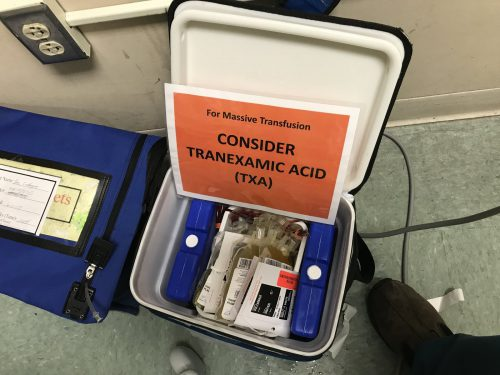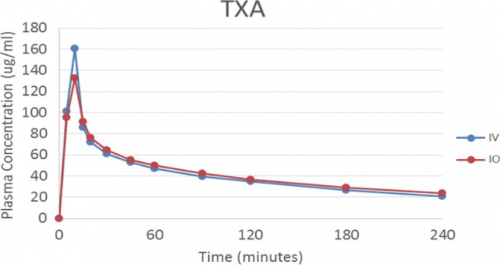Massive Transfusion Protocol (MTP) week continues! I’m releasing the next Trauma MedEd newsletter to subscribers at the end of the week, which deals with advanced MTP topics. So leading up to that, I am reviewing the basics for the next several days. I’ll continue today with MTP activation triggers.
What criteria should trigger your massive transfusion protocol? Sometimes, it’s obvious. The EMS report indicates that your incoming patient is in shock. Or there was notable blood loss at the scene. Or they have a mangled extremity and will need blood products in the OR, if not sooner.
But sometimes the need for ongoing and large quantities of blood sneaks up on you. The patient is doing well but has an unexplained pressure dip. And it happens again. You give one of your uncrossmatched units of blood. It happens again. At some point, you come to the realization that you’ve given six units of blood and no plasma or other products! Ouch!
Many trauma centers have adopted MTP criteria like:
- More than 4 units given over 4 hours
- More that 10 units to be given over 24 hours
- Loss of half a blood volume over 24 hours
I call these the “psychic power” criteria, because one must surely be prescient to know this information just shortly after the patient arrives. Don’t include criteria like these at your center!
Instead use some sort of objective criteria. A simple one is the use of any of your blood refrigerator products or emergency release blood, or a calculated score such as the ABC score or shock index (SI).
ABC score is the Assessment of Blood Consumption score and gives one point each for a heart rate > 120, SBP < 90, positive FAST, penetrating mechanism. ACS score > 2 was predictive of requiring MTP with sensitivity and specificity of about 85%. Overtriage was about 15%.
Shock index (SI) is defined as the heart rate divided by the SBP. Normal values are in the range of 0.5 to 0.7. Need for MTP was found to increase to 2x for SI of 0.9, 4x with an SI of 1.1, and 7x with SI 1.3.
A recent paper compared these two systems retrospectively on 645 trauma activations over a 5-year period. They found that they both worked well with the following results:
- Shock index > 1 – 68% sensitive 81% specific
- ABC > 2 – 47% sensitive, 90% specific
The study suggests that shock index is more sensitive, and takes less technical skill to calculate. Bottom line: just pick the some objective criterion you are most comfortable with and use it!
Reference: Accuracy of shock index versus ABC score to predict need for massive transfusion in trauma patients. Injury 49(1): 15-19, 2018
Well folks, that’s it for MTP week! Hope you enjoyed it.
And don’t forget to subscribe to TraumaMed if you want to get a full newsletter discussing advanced MTP topics tomorrow. Otherwise, you’ll be reading a post on CT scans and rib fractures in the elderly! Subscribe and download back issues by clicking here.
Links: (note – future links will not be live until 9am the day they are published)



